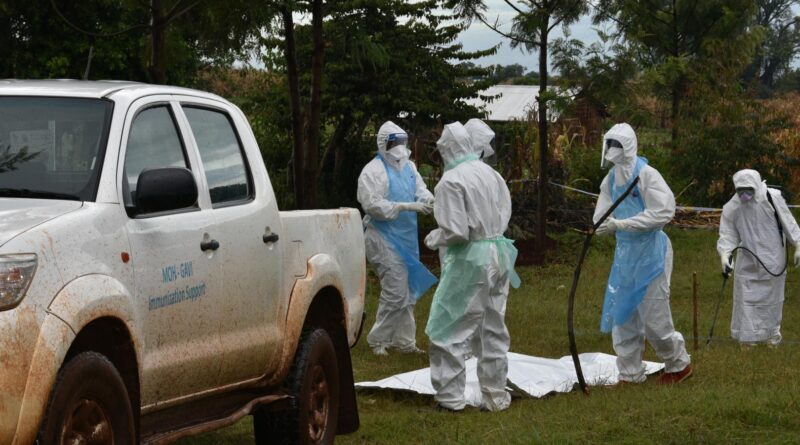Deadly Marburg Virus Outbreak in Tanzania Claims Nine Lives
Health authorities have raised concerns following a new outbreak of the deadly Marburg virus in Tanzania, where nine out of ten infected individuals have died. The outbreak, which was officially confirmed last week, has been reported in the Kagera region, located in the northwest of the country.
Marburg virus disease (MVD) is a highly infectious hemorrhagic fever similar to Ebola, with a case fatality rate of up to 88%. The virus causes severe internal bleeding and external bleeding from the eyes, nose, and mouth. It spreads through direct contact with the bodily fluids of infected individuals, contaminated surfaces, or animals such as fruit bats.
Ngashi Ngongo from the Africa Centre for Disease Control (Africa CDC) stated that efforts are underway in collaboration with the World Health Organisation (WHO) to contain the outbreak and minimise casualties. Health officials have identified approximately 281 people who had contact with the confirmed cases and are closely monitoring them for symptoms. According to Ngongo, a total of 31 tests have been conducted so far, with two confirmed infections and the remaining 29 testing negative.
The Kagera region, home to nearly three million people, is of particular concern due to its transportation links. The country’s main international airport in Dar es Salaam is accessible by train from the affected region, raising fears of wider transmission.
This outbreak comes just weeks after Rwanda, Tanzania’s neighbour, declared an end to its own Marburg outbreak. Rwanda had recorded 66 infections, with healthcare workers making up a significant portion of the cases. Despite the high transmission rate, Rwanda’s response was praised for reducing the fatality rate to 23%—one of the lowest ever recorded for the virus in Africa.
Tanzanian health authorities, with support from the WHO and Africa CDC, have intensified surveillance, contact tracing, and public awareness campaigns to prevent further spread. Neighbouring countries, including Uganda, Burundi, and the Democratic Republic of the Congo, have also heightened their monitoring efforts to prevent cross-border transmission.
See Also: Trump Signs Laken Riley Act as His First Legislation
Although the risk of global spread remains low, experts stress the importance of early detection and rapid response. The public has been advised to follow health guidelines, maintain hygiene, and report any symptoms such as fever, severe headache, and unexplained bleeding.
Marburg virus was first identified in 1967 in Germany and Serbia after laboratory workers were infected through contact with African green monkeys imported from Uganda. Since then, outbreaks have occurred sporadically in African nations, with mortality rates varying depending on the response measures taken.
This is Tanzania’s second Marburg outbreak, following a previous one in March 2023 in the same region. That outbreak led to nine cases and six deaths before it was successfully contained.
As the situation unfolds, authorities remain on high alert, working tirelessly to prevent further infections and protect public health.
The emergence of the Marburg virus in 2025, following the HMPV outbreak in China earlier this year, highlights the ongoing need for global vigilance and preparedness in addressing infectious diseases. This situation offers us an opportunity to strengthen our response systems and support affected communities as we work together to mitigate the impact of such outbreaks.
Content Credit| Ajibola Emmanuel Adebayo
Picture Credit | https://www.afro.who.int/




